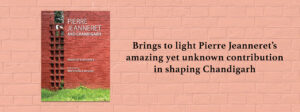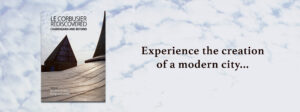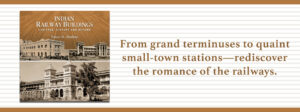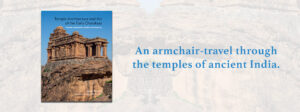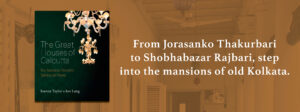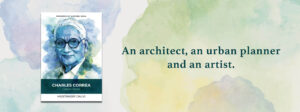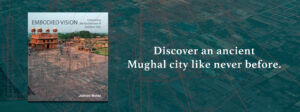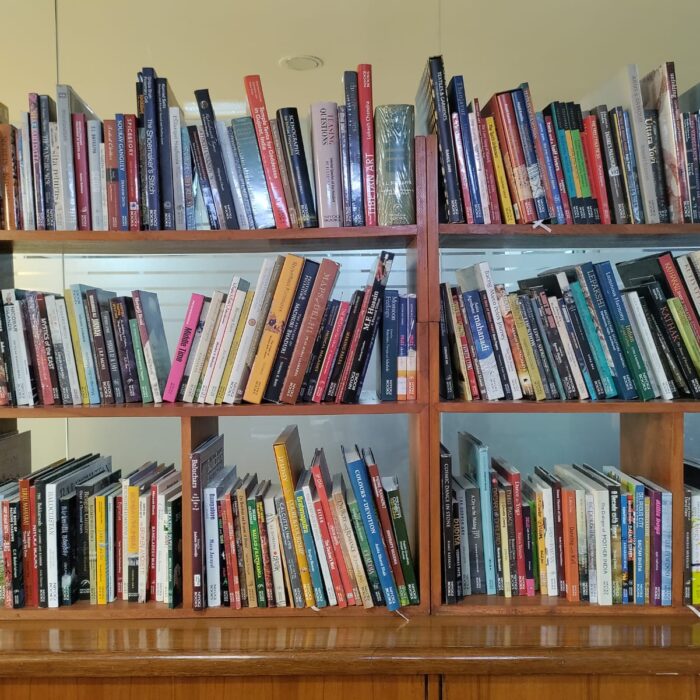
10 Best Architecture Books for Every Reader
From Mughal Cities to Modernist Icons: 10 Architecture Books You’ll Love
‘Every science touches art at some points—every art has its scientific side,’ the great French physician, Armand Trousseau, once noted during one of his seminal lectures. Nowhere is this more evident than in the practice of architecture.
India’s architectural landscape represents a confluence of tradition and innovation—from Laurie Baker’s cyclone-resistant Fishermen’s Village to Le Corbusier’s modernist masterpieces in Chandigarh to Charles Correa’s climate-responsive designs like the Jawahar Kala Kendra in Jaipur.
This modern innovation builds upon India’s extraordinary architectural heritage, which has influenced designers worldwide—be it the pristine symmetry and mathematical precision of the Taj Mahal or the intricate carved temples of Khajuraho that demonstrate sophisticated structural engineering married with artistic expression.
Modern architects have taken on all these influences and reimagined South-Asia’s rural and urban spaces while honouring its cultural context.
For those fascinated by architecture, from beginners to students to seasoned professionals, here are ten of the best architecture books that offer profound insights into Southasian architecture:
1. Delirious City: Polity and Vanity in Urban India

Born from the ‘grainy combination of despair and delight’ experienced by Indian city dwellers, this provocative work blends various mediums—writing, drawing, painting, sculpture, and architecture—to make sense of the urban Indian experience. The book examines daily life, notable places, and diverse personalities—from houses and builders to parks, malls, bureaucrats, politicians, and people across the socioeconomic spectrum. Moving from describing current urban conditions through memories of the past to hopeful future visions, this sometimes architectural, sometimes cultural, and frequently facetious work imitates life in the Indian city, highlighting the sometimes chaotic intersection of planning ideals and lived reality.
The many faces of life in the Indian city…
2. Pierre Jeanneret and Chandigarh
While Le Corbusier’s vision for Chandigarh is widely celebrated, this book illuminates his cousin Pierre Jeanneret’s crucial role in implementing the ‘City Beautiful.’ Jeanneret designed government housing and educational facilities, including Panjab University’s sprawling campus, during his transformative stay from 1951-1965. The book reveals not only his architectural brilliance but also his humility and deep connection to the city—so profound that he requested his ashes be scattered in Sukhna Lake upon his death.
Brings to light Pierre Jeanneret’s amazing yet unknown contribution in shaping Chandigarh
3. Le Corbusier Rediscovered: Chandigarh and Beyond
Following UNESCO’s recognition of Chandigarh’s Capitol Complex as a World Heritage Site, this richly illustrated anthology features essays by global experts examining Le Corbusier’s enduring influence. With nearly 250 images, including rare archival materials, the book offers fresh perspectives on the 20th century’s greatest architect-planner and his crowning achievement in India.
Experience the creation of a modern city…
4. Indian Railway Buildings: Heritage, History & Beyond
From Bengal Nagpur Railway House, reportedly once home to exiled Nawab Wajid Ali Shah, to the spectacular Chhatrapati Shivaji Terminus—Vinoo N. Mathur takes readers through iconic railway structures built during the British Raj, from grand city terminuses to charming small-town stations. Packed with historical facts and rare photographs, the book explores the architectural features and historical significance of railway buildings constructed from the mid-nineteenth to mid-twentieth centuries.
From grand terminuses to quaint small-town stations—rediscover the
5. Temple Architecture and Art of the Early Chalukyas
The 6th-8th century temples of the Early Chalukyas are unrivalled in all of India for their comparatively early date and unusually complete condition, the remarkable juxtaposition of their different constructional techniques and building styles, and for the sheer beauty of their figural and decorative carvings. This volume by George Michell is the first to fully describe and illustrate these temples in central Karnataka like Badami Cave Temples, Jain Cave Temple, Mahakuteshvara Temple, Aihole Durga Temple, Virupaksha Temple etc. among many others.
An armchair-travel through the temples of ancient India.
6. The Great Houses of Calcutta
Shobhabazar Rajbari, Ghariwalla Mullickbari, Jorasanko Thakurbari or Thanthania Dattabari – these colonial era mansions of North Kolkata represent the aspirations and aesthetic values of the indigenous elite — wealthy Indian landowners, bankers, and traders — who flourished during the 18th and 19th centuries. In this book, Joanne Taylor and Jon Lang examine these architectural landmarks of the ‘City of Palaces.’
An armchair-travel through the temples of ancient India.
From Jorasanko Thakurbari to Shobhabazar Rajbari, step into the mansions of old Kolkata.
7. Himalayan Cities: Settlement Patterns, Public Places and Architecture
From Ladakh’s Likir monastery to the Mandi Palace to Nepal’s Patan Durbar Square—this volume explores settlements across the Himalayan region. Through identifying key principles and models typical of the area’s settlement patterns, public spaces, and architecture, Pratyush Shankar examines the relationship between natural systems and human ingenuity as manifested in built traditions.
Explore the unique monasteries and palaces of the Himalayas.
8. Charles Correa: Citizen Charles
This is the first-ever biography to explore the life of Charles Correa (1930-2015), who exemplified Indian modernism by adapting contemporary international technologies to India’s climate and customs. The book traces Correa’s journey from his childhood in Art Deco Bombay through his education among International Modernism’s giants and into his commissioned works in newly independent India. It also highlights Correa’s passionate advocacy for urban equity, decent housing for all citizens, and accessible public spaces—commitments that defined his career even through bitter disappointments. For architecture students seeking inspiration, this biography offers valuable lessons in combining social commitment with design excellence.
An architect, an urban planner and an artist.
9. Embodied Vision: Interpreting the Architecture of Fatehpur Sikri
An unconventional interpretation of the Mughal city, this book explores how the space is revealed through perception more than geometry, noting the tension embodied in shifting axes, complex rhythms, and juxtapositions of mythical symbols. Prof. Mehta observes that modern draughtsmanship techniques, which assume a bird’s-eye view, fail to represent the lived experience of inhabiting architecture. Students of ancient architecture will find this phenomenological approach refreshingly different from standard historical analyses.
Discover an ancient Mughal city like never before.
10. Rethinking Modernity: Towards Post Rational Architecture
Re-examining the very idea of Modernity in architecture, and drawing from a number of diverse sources such as philosophy, social science, art and technology, Prof. Mehta argues that the normal historical progression of architectural thought and production suffered an epistemological break in mid-18th century. He suggests that alternatives to rationalist narratives have always existed in Western and non-Western cultures, and contends that “Post Rational architecture” is already emerging in contemporary works. Like Vitruvius’s classical Ten Books on Architecture, this modern treatise challenges readers to reconsider fundamental assumptions about the discipline.
These ten books span the vast spectrum of architectural discourse—from ancient Indian designs to contemporary urban challenges, from technical explorations to philosophical inquiries. Whether you’re a student, professional, or simply an admirer of built environments, these volumes offer invaluable perspectives on how architecture shapes and reflects human experience.
Has the project to usher in Modernity run its full course and is now ready to be replaced by something called Post-Modern?

